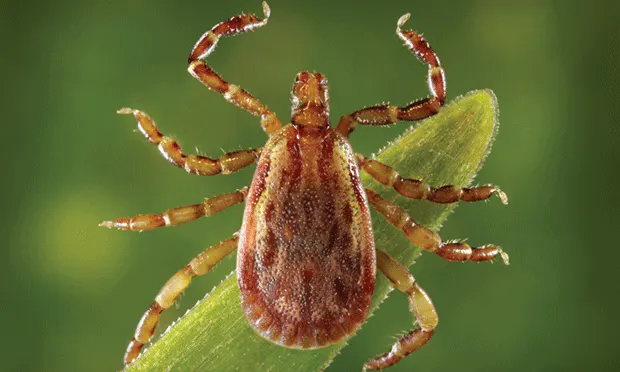Flea & Tick Treatment Options

You have asked…What are some current flea and tick treatment options and their mechanisms of action?
The expert says…Ectoparasite control has come a long way from bathing and dipping. Before the mid-1990s, few products reliably controlled flea and tick infestations. The development of effective adulticides, larvicides, and insect-growth regulators led to veterinarians, staff, and owners increasingly expecting products to kill 100% of fleas and ticks on pets and in the environment after a single application. Communication about the life cycle and control of parasites, both indoors and outdoors, was sometimes ignored in favor of quickly dispensing a product.1 In the past 5 to 10 years, reduced efficacy or resistance has been reported, but scientific confirmation is lacking.2
To manage increasingly complex flea and tick infestations, veterinarians should be familiar with both the life cycles of the parasites and properties of various parasite control drugs and compounds. Following is a brief overview of several products available in the United States. Unless otherwise noted, these options are associated with minimal toxicity in mammals.
Related Article: How Do Flea Control Products Kill Fleas?
Chloride Channel ActivatorsSelamectin
Macrocyclic lactone (avermectin) that binds to glutamate-gated chloride channels in invertebrates, resulting in blockage of neurotransmission and paralysis
Labeled for control of fleas and the American dog tick (ie, Dermacentor variabilis)
Indicated for dogs and cats
Available as spot-on application3
Related Article: When Tick Populations are Out of Control
GABA-Gated Chloride Channel AntagonistsFipronil
Phenylpyrazole that blocks invertebrate GABA-and glutamate-gated chloride channels necessary for inhibition of nerve impulses, leading to hyperexcitability and neurotoxicity
Labeled for control of fleas, ticks, chewing lice, and sarcoptic mites
Indicated for dogs and cats
Available as various spot-on products or topical spray4
Chitin Biosynthesis InhibitorsLufenuron
Benzoylphenylurea derivative that acts as insect development inhibitor, preventing flea eggs from completing metamorphosis by blocking chitin production
Labeled for control of flea populations by breaking life cycle at egg stage
Indicated for dogs and cats
Available in 3 forms: tablet for dogs (alone or with milbemycin oxime), liquid (suspension) for cats, and injection for cats5
Related Article: Flea Management: An Integrated Approach
Juvenile Hormone MimeticsThese insect growth regulators mimic juvenile hormones to prevent larvae from completing metamorphosis:
Pyriproxyfen
Labeled for control of flea larvae and may affect adult fleas
Indicated for dogs and cats
Available combined with other compounds as spot-on applications, shampoos, topical sprays, collars, and premise sprays6
Methoprene ([S]-methoprene)
Labeled for control of flea larvae
Indicated for dogs and cats
Available with other compounds as spot-on applications, shampoos, topical sprays, and premise sprays7
Nicotinic Acetylcholine Receptor AgonistsThese furanicotinyl and chloronicotinyl (neonicotinoids) insecticides bind to postsynaptic nicotinic acetylcholine receptors, resulting in inhibition of cholinergic transmission and paralysis of parasites:
Dinotefuran
Labeled for flea control
Indicated for dogs and cats
Available as spot-on application in combination with other compounds6
Imidacloprid
Labeled for control of fleas and chewing lice
Indicated for dogs and cats
Available as spot-on application alone or combined with other compounds in various products or with flumethrin in a collar8
Nitenpyram
Labeled for flea control
Has very short residual activity compared with other oral treatments, such as spinosad
Indicated for dogs and cats
Available as a tablet9
These spinosyn derivatives (macrocyclic lactone structure) activate nicotinic acetylcholine receptors, resulting in paralysis of parasites:
Spinetoram
Labeled for flea control
Indicated for cats
Available as spot-on application10
Spinosad
Labeled for flea control
Indicated for dogs and cats
Available as tablet alone or in combination with milbemycin oxime11
Octopamine Receptor AgonistAmitraz
Triazapentadiene compound that is a central α-adrenergic agonist, resulting in stimulation of receptors and neurotoxicity in invertebrates; also binds with octopamine receptors to increase nervous system activity
Labeled for tick control
Indicated for dogs
Toxic to cats and can cause adverse events in dogs if ingested
Available alone (collar) or in combination with pyriproxyfen12
Sodium Channel ModulatorsThese pyrethroids prolong the opening of voltage-gated sodium channels in invertebrates, resulting in increased action potentials and neurotoxicity:
Cyphenothrin
Labeled for control of fleas and ticks
Indicated for dogs
Toxic to cats if applied directly or through secondary exposure (eg, contact with recently treated dog) but low toxicity in most mammals
Available as spot-on application in combination with other compounds13
Deltamethrin
Labeled for control of fleas and ticks
Indicated for dogs
Toxic to cats but low toxicity in most mammals
Available as collar14
Etofenprox
Labeled for control of fleas, deer ticks, and mosquitoes
Indicated for dogs and cats
Available as shampoo and spray (dogs and cats), spot-on application (cats only), and is also an active ingredient in premise sprays and foggers15
Flumethrin
Labeled for tick control
Indicated for dogs and cats
Available as flea and tick collar combined with imidacloprid16
Permethrin
Labeled for control of fleas and ticks
Indicated for dogs
Toxic to cats if applied directly or through secondary exposure (eg, contact with recently treated dog) but low toxicity in most mammals
Available as spot-on application alone or in combination with other compounds; also available as topical and premise sprays17
Phenothrin
Labeled for control of fleas and ticks
Indicated for dogs
Toxic to cats if applied directly or through secondary exposure (eg, contact with recently treated dog) but low toxicity in most mammals
Available as spot-on application in combination with other compounds18
Voltage-Dependent Sodium Channel BlockersIndoxacarb
Oxadiazine bioactivated with enzymes found in insects to block sodium channels, resulting in insect paralysis
Labeled for flea control, but may also control flea eggs and larvae
Indicated for dogs and cats
Available as spot-on application alone (dogs and cats) and combined with permethrin (dogs only)19
CRAIG DATZ, DVM, MS, DABVP, DACVN, is adjunct associate professor at University of Missouri. He is also the nutrition and scientific affairs manager of Royal Canin USA. Dr. Datz has spoken at numerous CE conferences, including the NAVC Conference, and is a parasitology, immunology, and infectious disease consultant.